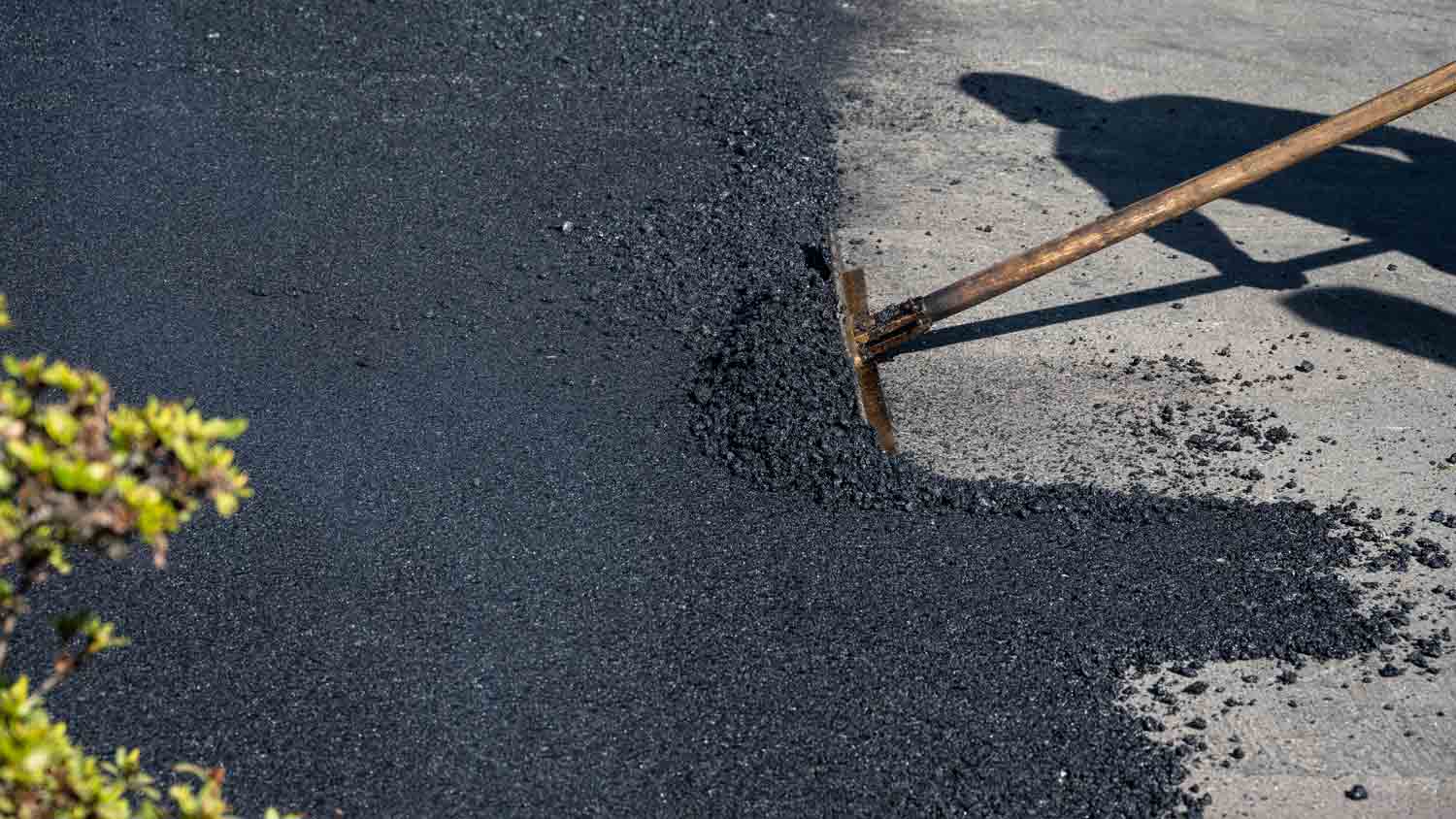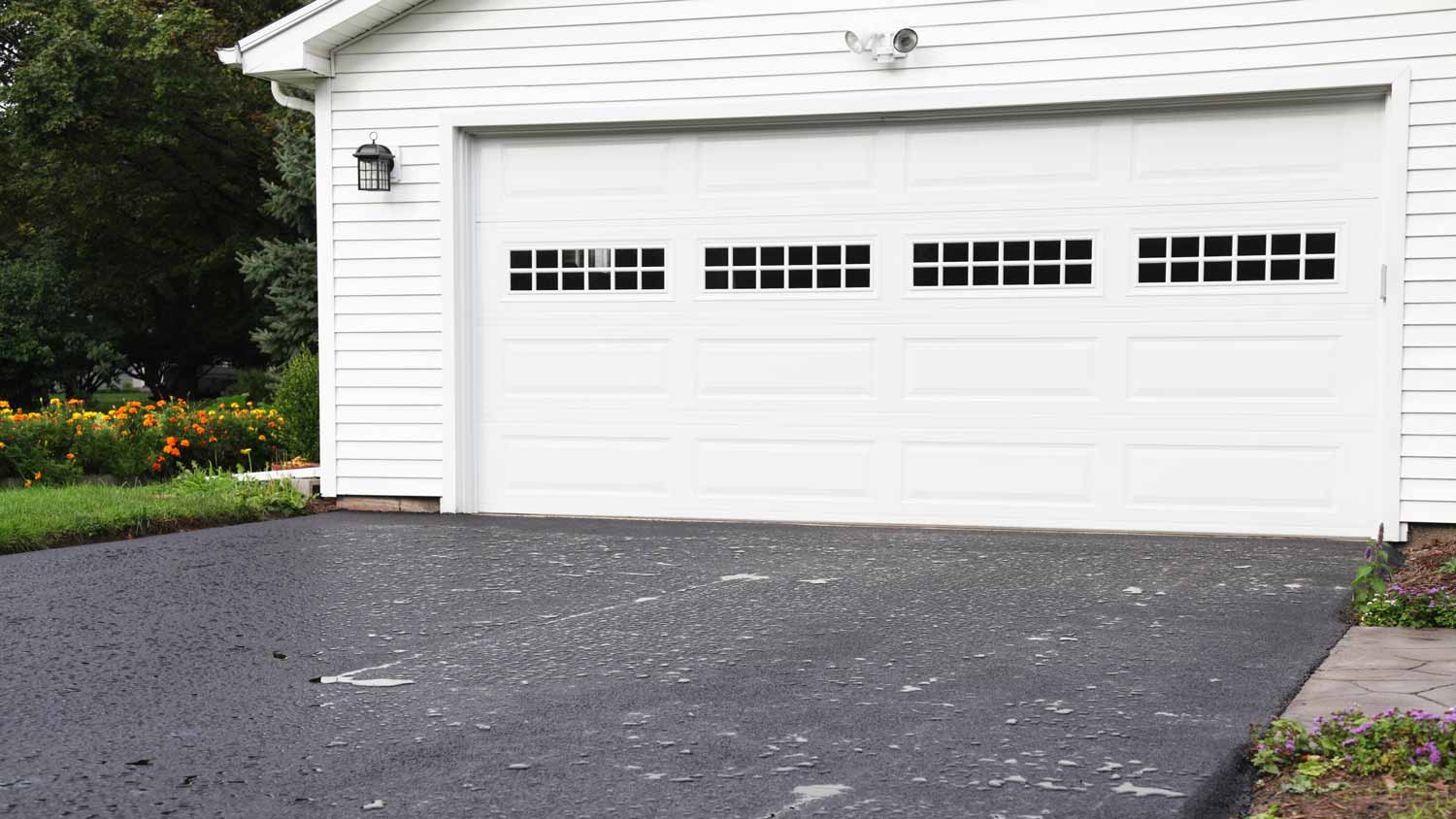
Asphalt driveway repair costs account for everything from hairline cracks to complete overhauls. Learn what to expect from your asphalt repair bill.
Tar might be a sticky situation, but asphalt can smooth things over


Asphalt is a mix of aggregates and a binding substance, bitumen, while tar is a liquid binder made from organic materials like wood and coal.
Tar is fading from paving while asphalt remains an industry standard.
Fresh asphalt fades to gray over time, while tar stays darker and glossier.
Tar-based surfaces tend to be rougher than asphalt.
Coal tar poses higher health and environmental risks than asphalt.
You don’t hear much about tar in paving conversations these days, and there’s a reason for that. If you’re a homeowner or planning a pavement project, chances are you’ve heard asphalt recommended over and over again. Let’s break down the differences so you know exactly why asphalt dominates and whether tar still has a place in today’s projects.

Both asphalt and tar have been used in paving, but one has stood the test of time while the other has largely faded from modern road construction. The differences go beyond looks, right down to their composition, durability, and environmental impact. Understanding what sets them apart helps explain why today’s roads, driveways, and parking lots are built the way they are.
| Type of Difference | Asphalt | Tar |
|---|---|---|
| Composition | Aggregates and bitumen | Liquid from heating of organic materials |
| Appearance | Smooth, black | Dark and glossy |
| Application | Roads, parking lots, roofing | Historically roads, now niche uses |
| Durability | More durable, less maintenance | Less durable, more maintenance |
| Health Concerns | Fumes and burns | PAHs, skin irritation, and burns |
| Environmental Impact | More recyclable | Less recyclable |
Asphalt is a mix of aggregates—gravel, sand, or crushed rock—and bitumen, a sticky, petroleum-based binder that comes from refining crude oil. Tar is a thick liquid made by heating organic materials like coal or wood until they break down into a binder. While asphalt relies on bitumen to hold everything together, traditional tarmac (short for tarmacadam) uses tar as its glue. Different origins, different chemistry—one is petroleum-based while the other is cooked from raw materials.

Asphalt and tar don’t look the same, and it’s not hard to spot the differences. Each has distinct visual traits—color and texture—that set them apart.
Fresh asphalt has that deep, jet-black look, but don’t get too attached—it fades. Sun, rain, and traffic wear it down, turning it into a duller gray over time. The exact shade also depends on the mix of aggregate used. Tar stays darker and glossier. Coal tar, in particular, has a slick, almost wet-looking black finish. While both materials start out dark, asphalt loses its intensity while tar keeps its bold, inky appearance for much longer.
Asphalt is usually a smooth, even surface—perfect for roads and driveways. However, not all asphalt is the same. Some mixes have a rougher feel, depending on the aggregate and application. Tar, being a liquid, doesn’t really have a texture on its own—it’s slick and smooth when applied. Older tarmac surfaces were coarser than the asphalt we use today.
Asphalt is everywhere—roads, driveways, highways, parking lots, and even airport runways. It’s made to handle heavy traffic and shifting temperatures without cracking. Beyond paving, it’s used in roofing, waterproofing, and even stormwater management (with porous asphalt). Tar was once used for road construction (aka tarmac), but these days, its biggest—albeit fading—role in paving is in “tar and chip” driveways, an inexpensive, textured alternative to asphalt. Today, most tar and chip driveways use liquid asphalt instead.
When it comes to durability, asphalt has the advantage. One cracks under pressure while the other holds its ground (pun intended) with regular maintenance. Asphalt’s flexibility allows it to expand and contract with temperature shifts, making it less prone to cracking. It also stands up better to chemicals, like gasoline, that can eat away at tar surfaces. Meanwhile, tar tends to become brittle over time, requiring more maintenance and struggling under heavy traffic. Even in “tar and chip” driveways, lifespan tops out around 15 years, while with proper care, asphalt can last up to 30 years.
Hot, messy, and not exactly lung-friendly—that can be the reality of working with asphalt or tar. Laying pavement isn’t just about getting a smooth surface. It comes with serious health risks, depending on the material. Asphalt, when heated, gives off fumes that can irritate the lungs, eyes, and skin. Long-term exposure isn’t great, but the immediate concern is burns from high application temperatures.
However, when it comes to health risks, tar is the bigger problem. Coal tar, in particular, contains carcinogenic polycyclic aromatic hydrocarbons (PAHs). The fumes are harsher, the chemical burns are more severe, and the long-term health concerns are much higher.
That’s exactly why professionals—equipped with the knowledge, skills, and proper gear—should handle asphalt and tar. And with tar fading out of use, reaching out to your local asphalt contractor is always a smart move.
Neither asphalt nor tar is winning any environmental awards, but one is clearly worse. Tar, especially coal tar, is loaded with persistent pollutants called PAHs, which don’t break down easily and can contaminate soil and water for years. Asphalt, on the other hand, isn’t perfect. It’s made from crude oil and takes a lot of energy to produce, but it has a major advantage—recyclability. Reclaimed Asphalt Pavement (RAP) reduces waste and the need for new materials. Tar-based surfaces, by comparison, are far less recyclable. If sustainability matters to you, asphalt is the better—though still imperfect—choice.
From average costs to expert advice, get all the answers you need to get your job done.

Asphalt driveway repair costs account for everything from hairline cracks to complete overhauls. Learn what to expect from your asphalt repair bill.

The cost to build a road on your property can be high, but the utility is often worth it. Use this cost guide to see how much this project will cost.

Discover the average paver driveway cost, including price ranges, key cost factors, and tips to help you budget for your driveway project.

Learning how to remove driveway stains depends on the type of stain, your driveway, and your abilities. Luckily, these 8 methods are pretty simple. Learn more.

Wondering when your new driveway can handle water? Learn the right wait time for asphalt and concrete so you can prevent cracks and early wear and tear.

Our eight gravel driveway maintenance tips, including raking and spraying, make it easy to keep your gravel driveway looking good and functioning properly.